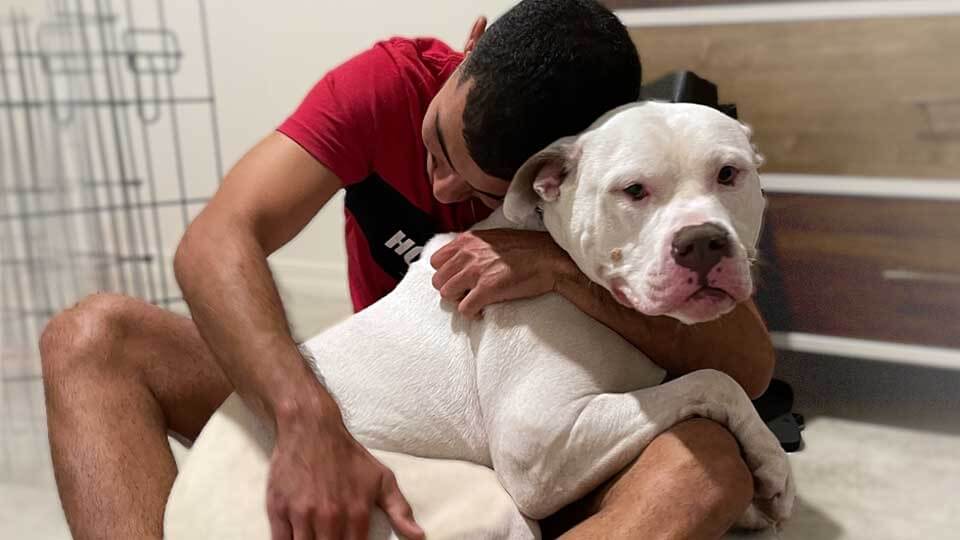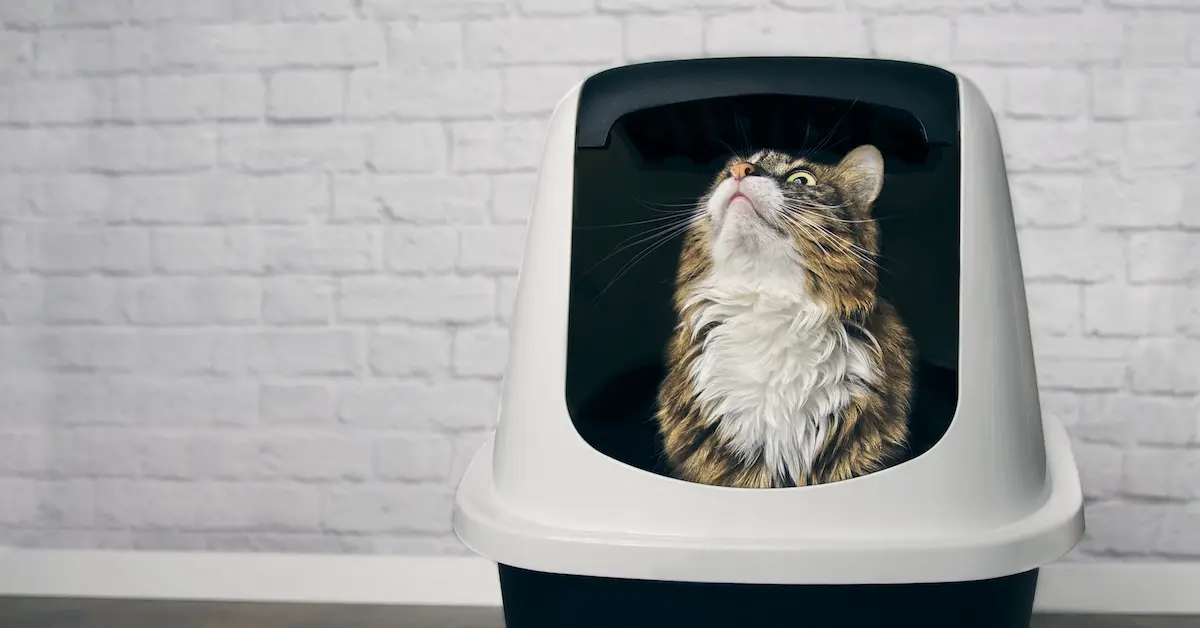It is possible to adopt a hypoallergenic dog with patience and knowledge. Popular hypoallergenic dog breeds include Bichon Frise, Poodle, and Yorkshire Terrier.
However, it is important to note that there is no truly allergy-safe breed and hypoallergenic dogs may still produce allergens that can cause a reaction. Grooming, bathing, and adding oils can help reduce allergens. It is recommended to have a meet-and-greet between the potential new dog and any current household pets before adopting from a shelter or rescue organization.
Additionally, mixed breeds may or may not be hypoallergenic, so it is important to research before adopting. Overall, adopting a hypoallergenic dog requires careful consideration and preparation, but can provide a loving companion for those with allergies.

Credit: pawsfurrecovery.org
Most Common Hypoallergenic Dogs
Finding a hypoallergenic dog to adopt can be challenging, but not impossible. Some of the most common hypoallergenic dog breeds include Maltese, Barbet, Maltipoo, Basenji, Puli, Labradoodle, and Bichon Frise. However, no breed is 100% hypoallergenic, and it’s important to spend time with the dog before adoption to see if you have any allergic reactions.
For those who experience allergies but also want a fur baby to cuddle with, hypoallergenic dog breeds may be the answer. These breeds are known for producing less allergens and are less likely to cause allergic reactions. But what are the most common hypoallergenic dogs? Let’s take a look at some of the popular breeds.
Affenpinscher
The Affenpinscher is a small breed that’s well-suited for small living spaces. They have a unique appearance with a scruffy-looking coat that’s hypoallergenic. Affenpinschers are known for their playful and curious personalities, making them great companions.
Bichon Frise
The Bichon Frise is a fluffy little dog breed that’s highly energetic and affectionate. These dogs adapt well to apartment living and are known for their intelligence and friendliness. They have a hypoallergenic coat that needs regular grooming to keep it healthy.
Chinese Crested Dog
The Chinese Crested Dog is a small breed that comes in two varieties: hairless and powderpuff. Both varieties have hypoallergenic coats that make them great for allergy sufferers. Chinese Crested Dogs are known for their sweet nature and adaptability to different living situations.
Havanese
The Havanese is a toy dog breed that’s becoming increasingly popular as a hypoallergenic option. These dogs have a long, silky coat that sheds minimally and produces less dander, making them suitable for those with allergies. Havanese are known for their intelligence and affectionate personalities.
Shih Tzu
The Shih Tzu is a small breed that originated in China. They have a long, silky coat that’s hypoallergenic and requires regular grooming. Shih Tzu dogs are known for their affectionate and gentle nature and adapt well to apartment living.
Yorkshire Terrier
The Yorkshire Terrier, also known as a Yorkie, is a small breed that’s highly energetic and full of personality. They have a hypoallergenic coat that’s silky and requires regular grooming to keep it healthy. Yorkies adapt well to apartment living and make great companions.
These are just a few examples of the most common hypoallergenic dog breeds. It’s important to note that no dog breed is completely allergen-free, but hypoallergenic dogs produce less allergens and are less likely to cause allergic reactions. If you’re looking to adopt a hypoallergenic dog, consider one of these breeds as they are popular for a reason!

Credit: www.bdrr.org
Factors To Consider Before Adopting A Hypoallergenic Dog
Before adopting a hypoallergenic dog, it is important to consider factors such as the breed’s temperament, exercise needs, and grooming requirements. While hypoallergenic dogs may produce less dander or shed less hair, it’s important to note that they can still cause an allergic reaction in some individuals.
If you suffer from allergies but want to experience the joy of owning a dog, then adopting a hypoallergenic dog might be the answer. However, before making this decision, you need to carefully consider several factors to ensure that you choose the right breed for you and your family.
Allergies
While there are no completely hypoallergenic dogs, some breeds are known to cause fewer allergy symptoms than others. These breeds produce less dander, which is the primary cause of pet-related allergies. However, it is important to note that different people have different triggers, and some so-called hypoallergenic dogs might still cause allergic reactions.
Grooming Requirements
Most hypoallergenic dogs require regular grooming to prevent tangles and matting of their hair. Some breeds also need frequent haircuts, and you might have to take your dog to a professional groomer regularly. You will need to invest in grooming tools, such as brushes and clippers, and learn how to use them correctly.
Temperament
The temperament of the dog is also crucial when choosing a hypoallergenic breed. Some dogs are more even-tempered and sociable than others and might be a better fit for families with children or other pets. It is important to research the characteristics of different breeds and choose one that matches your lifestyle and personality.
Training Needs
All dogs need training and socialization to become well-behaved pets. However, some breeds might require more training and patience than others. If you are a first-time dog owner or do not have the time and resources to invest in training, then you should consider a breed that is easier to train.
Size and Energy Level
Finally, the size and energy level of the dog should also be taken into consideration. Hypoallergenic breeds come in different sizes, from teacup poodles to large schnauzers, and they have varying levels of activity. If you live in a small apartment or have limited space, then you should choose a smaller breed with lower energy levels. On the other hand, if you are an active individual or family, then a larger, more active breed might be a better fit.
Adopting a hypoallergenic dog can be a challenging but rewarding experience. By considering these factors before making your choice, you can ensure that you choose a dog that fits your lifestyle and personality and that you will enjoy for many years to come.
How To Select The Right Hypoallergenic Dog
Selecting the right hypoallergenic dog can be tricky. Consider factors like your lifestyle, family, allergies, and the dog’s breed traits and personality before adopting one. Popular hypoallergenic breeds include Maltese, Bichon Frise, and Poodle.
For those who suffer from allergies, adopting a hypoallergenic dog can be a great solution. However, it’s important to take certain factors into consideration when selecting a hypoallergenic dog. In this article, we will discuss three key steps to selecting the right hypoallergenic dog: researching breeds and characteristics, visiting shelters and rescues, and evaluating their behavior and interaction with you.
Research Breeds and Characteristics
When it comes to selecting a hypoallergenic dog, it’s important to research different breeds and their characteristics. While no dog breed is entirely hypoallergenic, some breeds are known to shed less and produce fewer allergens than others. These include breeds such as the Maltese, Barbet, Maltipoo, Basenji, Puli, and Labradoodle. Before adopting a dog, make sure to research the breed’s temperament, exercise needs, and potential health issues to ensure it’s a good fit for you and your lifestyle.
Visit Shelters and Rescues
Visiting shelters and rescues can be a great way to find a hypoallergenic dog. Many shelters have a variety of breeds available, including hypoallergenic ones. It’s important to keep an open mind and be patient when visiting shelters, as you may need to visit multiple shelters before finding the right dog for you. Additionally, visiting shelters and rescues can save a dog’s life and provide a loving home for a furry friend in need.
Meet the Dog and Spend Time with Them
Before adopting a dog, it’s important to meet them and spend time with them to see if they’re a good fit for you. When meeting a dog, pay attention to their behavior and interaction with you. Ideally, you want a dog that’s friendly, affectionate, and responsive to your commands. Spending time with a dog can also give you insight into their energy level and exercise needs, which should be taken into consideration when selecting a hypoallergenic dog.
Selecting the right hypoallergenic dog requires research, patience, and evaluation. By researching different breeds and characteristics, visiting shelters and rescues, and meeting and spending time with dogs, you can find the perfect hypoallergenic companion for you.
Hypoallergenic Dog Care And Training
Adopting a hypoallergenic dog is a great option for those who suffer from allergies but still want to experience the love and companionship of a furry friend. However, taking care of a hypoallergenic dog requires specific grooming, feeding, exercise needs, as well as proper training. Here are some essential tips to help you take care of your hypoallergenic dog.
Grooming Tips And Best Practices
Grooming is vital for a hypoallergenic dog’s health and reducing allergies. Here are some grooming tips and best practices:
- Brush your dog’s coat regularly to remove dead hair and dander. Use a slicker brush or comb to help you get rid of mats and tangles.
- Bathe your dog once a month with a hypoallergenic dog shampoo. Avoid using human shampoo or harsh chemicals as it may irritate their skin.
- Trim your dog’s nails regularly to prevent overgrowth and discomfort.
- Clean your dog’s ears once a week to prevent build-up of bacteria and yeast.
Managing Allergies
While hypoallergenic dogs produce fewer allergens than other breeds, they are not entirely allergy-free. Here are some tips for managing allergies:
- Create an allergy-free zone in your home where your dog is not allowed.
- Invest in an air purifier to reduce the amount of allergens in the air.
- Vacuum your home frequently, including your dog’s bed and toys, to minimize the amount of hair and dander in your house.
- Wash your hands frequently after petting your dog to prevent the spread of allergens.
Feeding And Exercise Needs
Hypoallergenic dogs have specific feeding and exercise needs to maintain their health. Here are some tips for feeding and exercising your hypoallergenic dog:
- Feed your dog high-quality, hypoallergenic dog food that is free from wheat, corn, or soy.
- Provide your dog with regular exercise to prevent obesity and promote a healthy lifestyle. Take them for walks, play fetch, or other interactive games.
- Make sure your dog always has access to fresh water.
- Consult with your veterinarian to ensure your dog is receiving the proper nutrition and exercise for their breed and size.
Training Needs And Methods
Proper training is crucial for the well-being of your hypoallergenic dog and your household’s safety. Here are some training needs and methods:
- Potty train your dog using positive reinforcement methods such as treats or praise.
- Socialize your dog from an early age to prevent fear or anxiety issues later on.
- Teach your dog basic commands such as sit, stay, come, and leave it using positive reinforcement methods.
- Use crate training to prevent destructive behavior when you are not home.
Taking care of a hypoallergenic dog requires specialized care and attention, but the love and companionship they provide is well worth the effort.
Benefits Of Adopting A Hypoallergenic Dog
Adopting a hypoallergenic dog can be a great choice for individuals with allergies. These dogs produce fewer allergens because they shed less, making it easier to share your home with them without experiencing allergic reactions. Popular hypoallergenic breeds include the Bichon Frise, Poodle, and Portuguese Water Dog.
If you’re one of the millions of people worldwide who suffer from allergies and love dogs, adopting a hypoallergenic dog might be the perfect solution for you. Hypoallergenic dogs are specifically bred to produce fewer allergens, making them a great option for people with allergies to pet dander or fur. Below are some of the benefits of adopting a hypoallergenic dog:
Reduced Allergy Symptoms
Hypoallergenic dogs are perfect for people who are allergic, but still want the companionship and love of a dog. These dogs tend to shed less and produce fewer allergens, which means that you will most likely experience fewer allergy symptoms. By adopting a hypoallergenic dog, you can enjoy the joys of owning a dog without the fear of sneezing, wheezing, or itching.
Low-Shedding Coats
One of the significant benefits of owning a hypoallergenic dog is their low-shedding coats, which means that they are less likely to leave fur all over your home. By adopting a hypoallergenic dog, you don’t have to worry about vacuuming every day, as they do not shed, or shed very little. You also won’t have to deal with as much grooming as you would with a typical dog.
Lovable and Affectionate Companions
Hypoallergenic dogs can be just as lovable and affectionate as other dogs, with the added benefit that they produce fewer allergens. These dogs love to cuddle and be close to their owners, offering comfort, companionship, and loyalty. By adopting a hypoallergenic dog, you can enjoy the love and affection that comes with owning a pet, without the inconvenience of allergies.
Opportunity to Rescue a Dog in Need
By adopting a hypoallergenic dog, you not only get to experience all the benefits of owning a loving and affectionate pet, but you also get the chance to rescue a dog in need. Many hypoallergenic dogs can be found in animal shelters that are looking for a loving home. By adopting one of these dogs, you get the joy of saving a life and giving a new lease on life to a furry friend.
Adopting a hypoallergenic dog has numerous benefits, from reduced allergy symptoms to finding a loving and affectionate companion. If you suffer from allergies and still want to own a dog, a hypoallergenic breed may be the perfect fit for your lifestyle. Remember, by adopting a rescue dog, you not only benefit from owning a pet, but you also help save a life.
If you or a loved one have allergies but still want to bring a furry friend into your home, a hypoallergenic dog may be the right choice for you. By following some simple steps, you can adopt a hypoallergenic dog and enjoy all the benefits of having a loyal companion without sacrificing your health and wellbeing.
Summary Of Key Points
- There is no such thing as a completely hypoallergenic dog, but some breeds produce less dander than others
- Adopting a hypoallergenic dog may require some extra grooming and maintenance
- It’s important to spend time with the dog before adoption to ensure you don’t have an allergic reaction
- There are many hypoallergenic dog breeds available for adoption, including Poodles, Bichon Frises, and Yorkshire Terriers
Steps To Take When Adopting A Hypoallergenic Dog
- Research hypoallergenic breeds to determine which one is right for your lifestyle
- Visit local shelters or rescues to meet hypoallergenic dogs available for adoption
- Spend time with the dog to ensure you don’t have an allergic reaction
- Discuss any necessary grooming or maintenance requirements with the shelter staff or breeder
- Prepare your home for your new companion by purchasing necessary supplies and creating a safe space for them
Life With Your New Companion
Once you’ve adopted your hypoallergenic dog, you’ll be able to enjoy all the benefits of having a loyal companion without worrying about allergies. While some extra grooming and maintenance may be necessary, many hypoallergenic breeds are still low-maintenance and easy to care for.
Overall, adopting a hypoallergenic dog is a great choice for anyone with allergies who still wants to experience the joys of pet ownership. With a little bit of research and preparation, you can find the perfect furry friend to bring into your home and create a lifelong bond with.
Final Thoughts On Adopting A Hypoallergenic Dog

Credit: heritage-rc.com
Frequently Asked Questions On Adopting A Hypoallergenic Dog
What Is The Most Friendly Hypoallergenic Dog?
The most friendly hypoallergenic dogs include Bichon Frise, Basenji, Bedlington Terrier, Affenpinscher, Poodle, Hairless Chinese Crested, Havanese, Irish Water Spaniel, Kerry Blue Terrier, Giant Schnauzer, Shih Tzu, Wire Fox Terrier, Yorkshire Terrier, Maltipoo, Maltese dog, Puli dog, and Labradoodle. However, remember that no breed is truly allergy-safe and hypoallergenic dogs may still cause reactions.
What Are The Most Common Hypoallergenic Dogs In Shelters?
Some popular hypoallergenic dog breeds found in shelters include Affenpinscher, Basenji, Bedlington Terrier, Bichon Frise, Chinese Crested, Havanese, Irish Water Spaniel, Kerry Blue Terrier, Poodle, Portuguese Water Dog, Puli, Giant Schnauzer, Shih Tzu, Wire Fox Terrier, and Yorkshire Terrier. However, it is important to note that no breed is truly allergy-safe.
“Hypoallergenic” dogs may produce just as many allergens as their furry counterparts.
Can You Still Have A Reaction To Hypoallergenic Dogs?
Yes, it’s possible to have a reaction to hypoallergenic dogs as no breed is completely allergy-safe. Hypoallergenic dogs might produce as many allergens as their furry counterparts, and these allergens can become airborne, causing allergic reactions. So, it’s advisable to spend time with the dog before adoption if you have allergies.
What Hypoallergenic Dog Is Right For Me?
There are several hypoallergenic dog breeds that are great for people with allergies. Some popular breeds include the Bichon Frise, Basenji, Labradoodle, Poodle, and Portuguese Water Dog. Consider the size of the dog as well, from small dogs like the Maltese and Maltipoo to larger breeds like the Giant Schnauzer.
Remember that no breed is completely allergy-safe, and it’s important to interact with the dog before adopting to see if you have a reaction.
Conclusion
Adopting a hypoallergenic dog can be a great option for those who suffer from allergies or simply want a low-shedding companion. While no breed is completely allergy-proof, there are a variety of hypoallergenic dogs to choose from. By doing research and finding the right match for your lifestyle, you can welcome a furry friend into your home without sacrificing your health or comfort.
With patience and love, you can enjoy all the benefits that come with having a loyal canine companion by your side.




